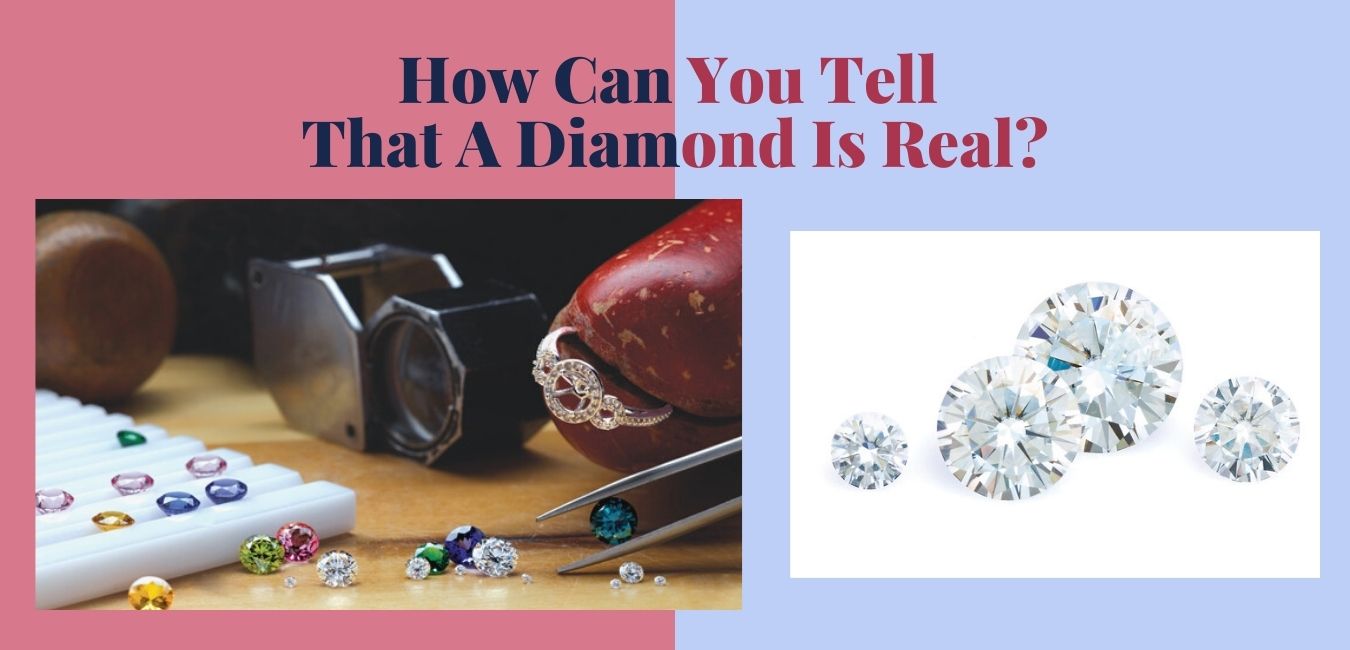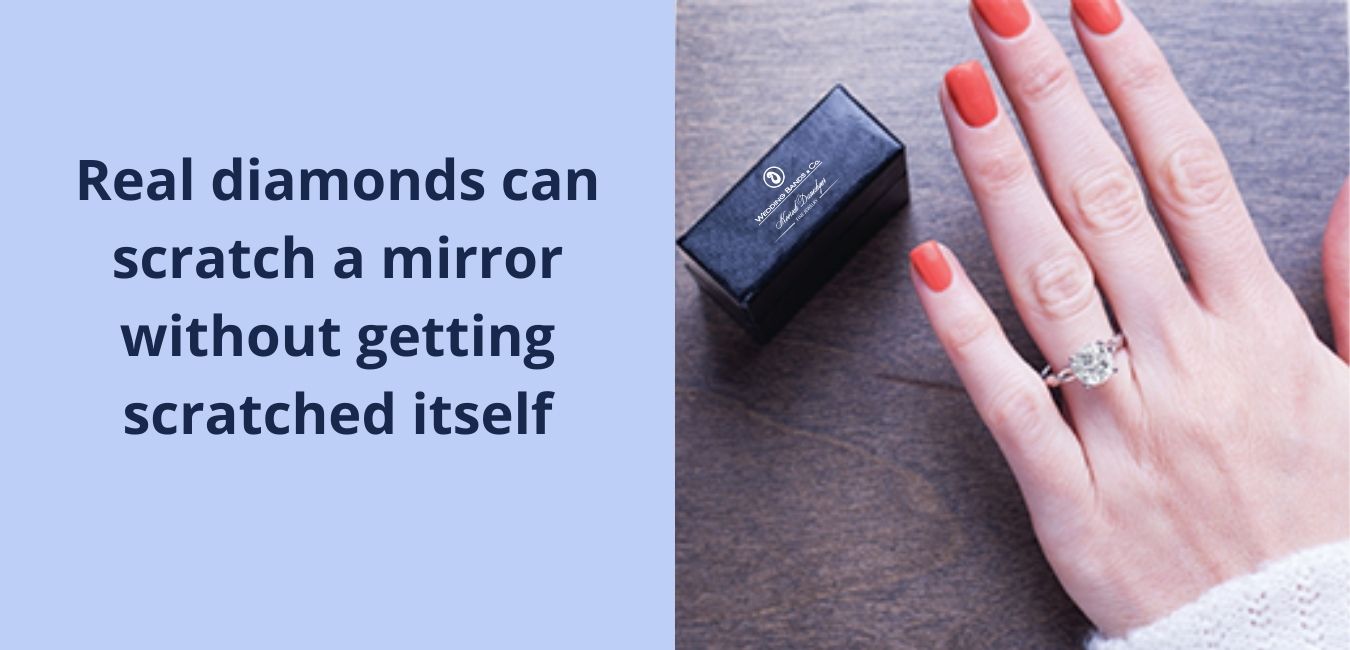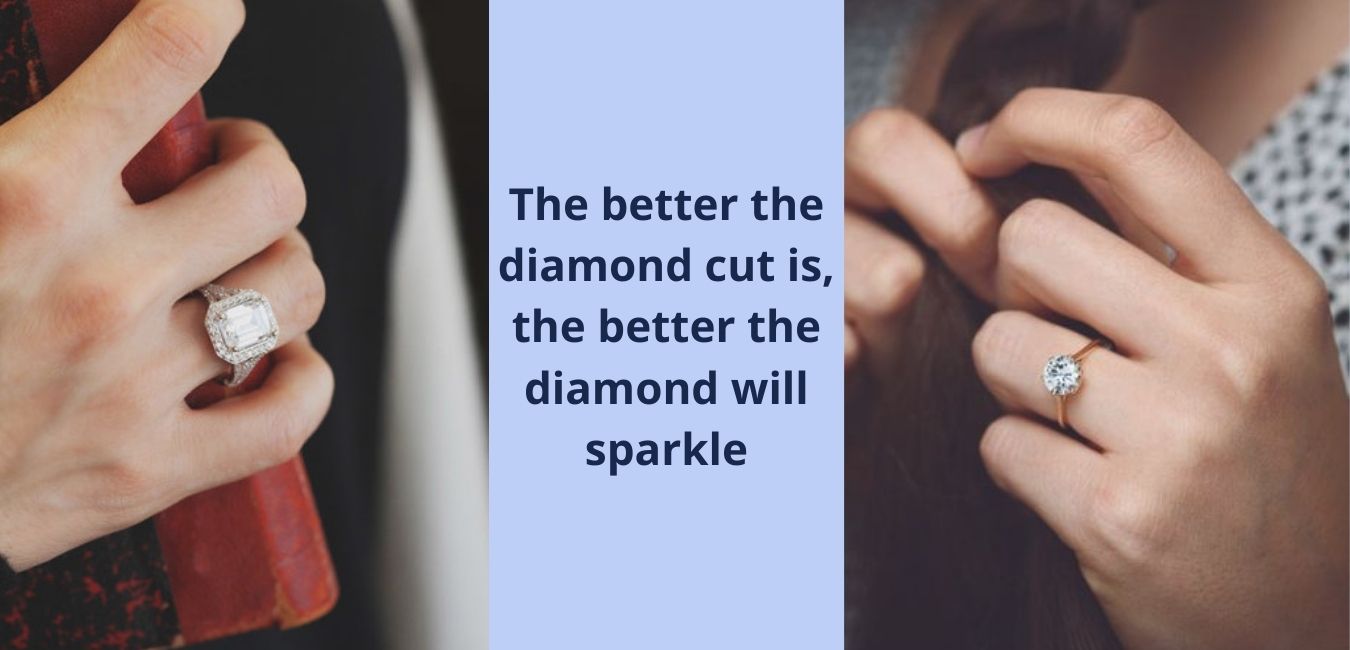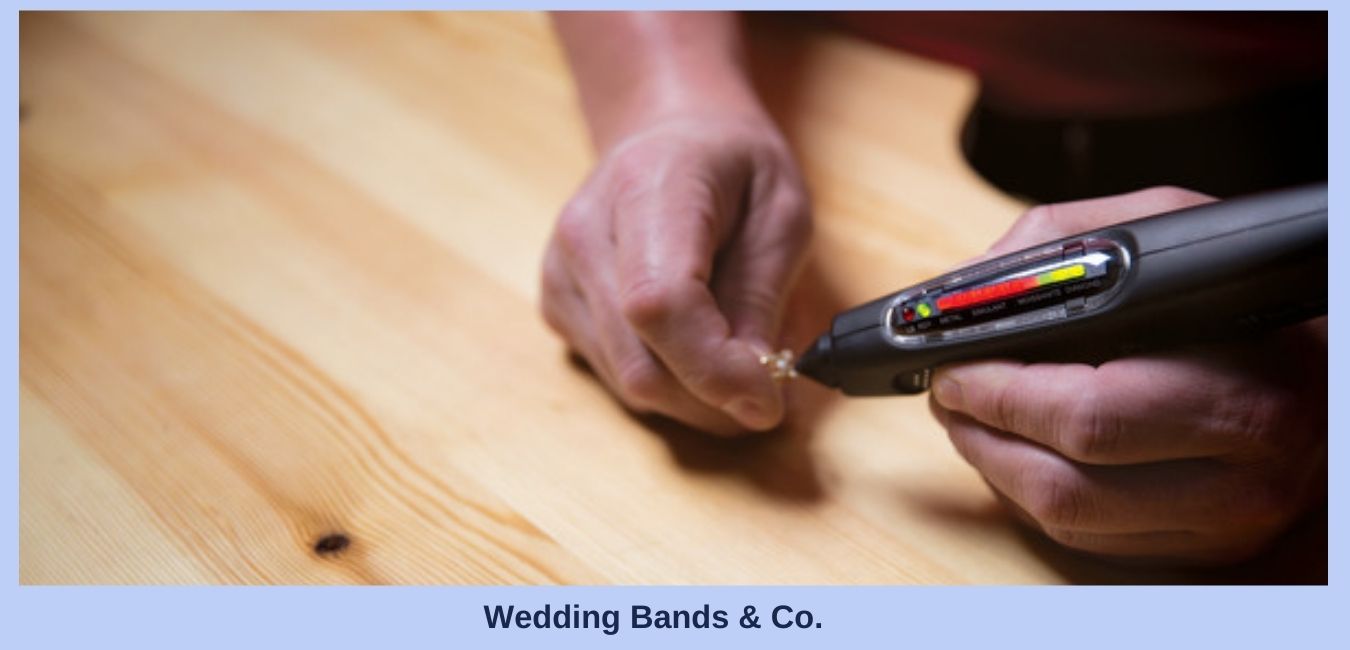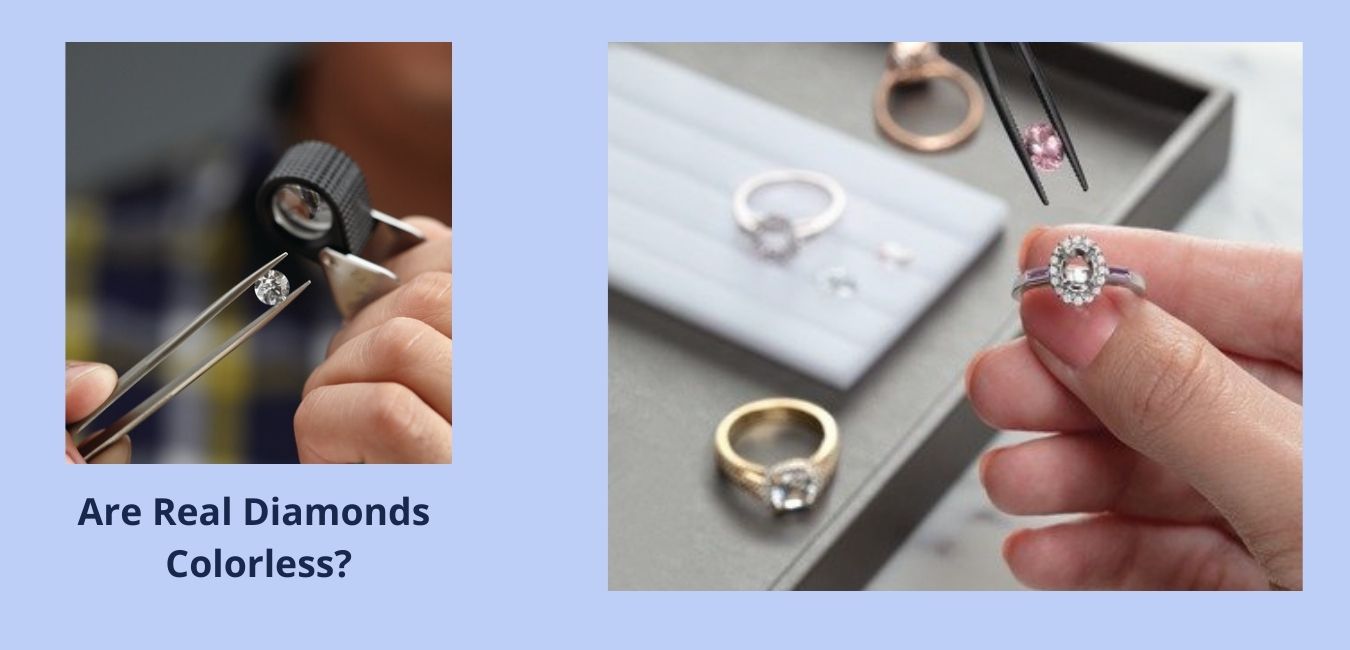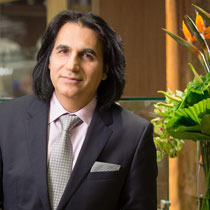How Can You Tell That A Diamond Is Real?
Posted by Koorosh Daneshgar on Sep 28th 2020
9 Ways To Tell If A Diamond Is Real
Have you ever wished to prove that your extraordinary diamond ring is real or fake? You might be interested to test your heirloom diamond or unknown gem that is not approved by the GIA. In this post, you can learn how to distinguish between a real diamond or a fake one.
With the advent of technology in today's world, it's hard to discern a real diamond vs fake diamonds, like cubic zirconium. On the other hand, usually, the old and inherited diamonds do not have GIA approval to guarantee that it is a real diamond or fake one. So in this post, we're going to learn how to distinguish between a real diamond vs a fake gem. We also will talk about the syntactic gemstones that are often mistaken with real and natural diamonds.
How Can You Tell That a Diamond is Real?
The best and most reliable way to distinguish between real diamond vs fake is to consult a gemologist or send the diamond to a diagnostic lab.
The best and most reliable way to distinguish between a real or fake diamond is to consult a gemologist or send the diamond to a diagnostic lab. There are other methods that can be tried, but for the best result you can get, it is suggested to work with the professionals
How Can You Tell if a Diamond is Real at Home?
These days, with so much progress in the jewelry business and the popularity of diamonds as jewelry gemstones, we see different laboratories around the world that produce and certify natural and syntactic diamonds for different kinds of pieces of jewelry, like diamond rings, bracelets, and pendants. Fake diamonds are almost indistinguishable to a real diamond to the naked eye, so it is always important to know if your spectacular diamond ring is counterfeit, or the genuine article.
We have a few suggestions on how you can examine the originality of your diamond at home without having to spend all your time and money. Of course, one home test is not reliable enough for a definitive diagnosis, so we do suggest trying a few before coming to a conclusion.
If you have your diamond ring’s certification, do not hesitate to read it carefully to understand what kind of diamond you are examining and what are your gemstone’s specifications. It will help you to do the following tests with more knowledge about your stone.
Home Tests
- Scratch Test
- Fog Test
- Diamond's Reflectivity Test
- Newspaper Test
- Thermal Conductivity Test
- Temperature Test
- Black Light Test
- Settings and Design Test
- Electricity Conductivity Test
1. Scratch Test
The first and easiest diamond home test is the scratch test. Real diamonds can scratch a mirror without getting scratched itself, due to its strong structure.
One of the reasons diamonds are so popular to begin with, is that the hardness of a diamond is known to be almost impossibly tough. A true diamond is the hardest known organic material in the world that can scratch other objects without getting scratched, making this test among the easiest to complete.
This test was one of the most common ways to define a real diamond against a fake, but now there’s a much larger variety of good quality gemstones with similar features to diamonds, so we cannot solely rely on the result of this test.
The Mohs scale of mineral hardness is the scale used to measure the hardness of minerals, by means of grading them 1 – 10. Diamonds are a grade 10, and as such is the hardest mineral and able to scratch a mirror with no issue. Other materials, however, like cubic zirconia, a rating of 8, and quartz, with a rating of 7, can also scratch the mirror with no issue either.
As you can see, scratching the mirror does not guarantee that this stone is a natural diamond. Because of this, we should always explore more options than just this one.
2. Fog Test
Real diamonds can conduct heat better than other gemstones and this allows us to try different techniques based on this feature.
The fog test is the easiest test ever. Just hold the diamond ring in front of your mouth and fog it with your breath. If the fog disappears instantly, your stone is probably a real diamond. On the other hand, if the stone is not a natural diamond, then it would take a few seconds before the fog disappears from the surface.
Keep in mind that some factors may influence the result of this test. For example, the humidity of the room can affect the result, also the result may vary depending on the size of the stone itself. The best way to test would be to compare your loose diamonds with an origin you already know against the diamonds you don’t, to test if they have the same reaction.
The fog test results wouldn’t give us the most accurate answer on its own. It will just guide us to the next level. More examinations on our gemstone are necessary to distinguish a real diamond vs fake.
3. Diamond’s Reflectivity
Get a close look at diamonds. See how beautiful they reflect the light and how magnificent they sparkle. These are the most important characteristics of diamonds that make them the best gemstone for the engagement ring. (You can read more about it here: https://www.weddingbandscompany.com/blog/the-best-colored-gemstones/)
So maybe we can get some scores in our real diamond vs fake battle by designing a test based on these features.
Before going into this home test, it is important to note:
- There is a huge difference between the Sparkle and the Reflectivity of a diamond. The luster and intensity of the light are the factors that we consider when we are talking about a diamond's sparkle. Reflectivity is talking about the color of the light that is refracted by the diamond.
- Please make sure to clean the diamond carefully before doing this test because dirt has significant effects on the result.
Sparkle Test
The better the diamond cut is, the better the diamond will sparkle. A Diamond sparkle is significantly brighter and more vibrant than other stones. You can tell the difference of a real diamond and, for example, a Cubic Zirconia just by looking at them carefully and taking note of the sparkle.
Poor quality cuts and the number of facets can affect the sparkle level. So, knowing the details of diamond certification can help us to understand how a real diamond sparkles more than other gemstones.
Reflectivity Test
Diamonds usually reflect light in shades of gray. If you see rainbow colors inside the diamond, it means that your stone probably is not a genuine diamond.
The only stone that has more brilliance than a real diamond is moissanite. To define if the stone is diamond or moissanite, hold the stone in front of your eyes and shine a light through it, if you see the rainbow colors, it is probably a moissanite stone or a fake diamond.
4. Newspaper Test
All you need for this technique is a newspaper or even a book. Now place your loose diamond on one word and turn it upside down, so the flat surface places at the bottom and try to read the letters. As facets of a real diamond refract light in many different directions, so you cannot see letters clear. If the stone is fake, then you can see the letters from the testing diamond, and if you have a real diamond, then the letters will not be visible through the stone.
There are exceptions to the newspaper test, of course. For example, very small diamonds, weighing less than half a carat, are not a good option for this test. Because of their small surface, nothing is visible, so you cannot judge the accuracy of the diamond.
On the other hand, poor quality diamond cuts are also not suitable for this home test. Because even if they are real diamonds, letters can be visible through diamonds because of their poor cut.
5. Temperature test
Another classic way for testing the validity of a real diamond is based on their ability to conduct the heat is the following method:
All you need is a lighter or candle flame, a glass of cold water, and tweezers to hold the stone.
Hold the stone in front of lighter using tweezers. Heat the stone for about 30 seconds, and then put the gemstone in a glass of very cold water. If it shatters, it’s probably a fake diamond. If nothing happened to the stone it means that the gemstone is a real diamond.
Be Warned! This test may destroy your gemstone if it isn’t a real diamond, so practice caution when performing this test on your gem.
Notice that moissanite can handle high temperatures near to a real diamond, and because of this, we may mistake a moissanite stone with a real diamond, so the results of this test are not enough when we are talking about moissanite.
6. Design and Setting
If you have an inherited engagement ring that you can't determine whether its gem is a real diamond or not, then take a look at its settings first. Although this is a general rule, Jewelry designers usually do not make precious stones such as diamonds with inferior or inexpensive metal rings.
Diamond stones usually set on high-quality metal like white and yellow gold or platinum. So check inside your ring’s center for marking, “PT” or “Plat” is the sign of platinum and “585”,”770” and “950” numbers indicate platinum and gold metal too.
A “C.Z“ stamp refers to cubic zirconia and it is probably not a real diamond.
7. Black Light Test
Take your diamond ring to a dark room and turn on a blacklight (or UV light) and hold your gemstone in front of it. Usually, the diamond reflects a blue fluorescence under black light.
You can also see possible flaws and imperfections that are one of the other features of diamonds. These flaws appear in white colors, so by looking for white spots, you can see your diamond’s imperfections. If the whole gem appears in bright white, there is a possibility that your diamond ring is not a real diamond as you thought it would be.
It is important to know that this test won’t prove that your diamond is real or fake. Because some real diamonds don’t reflect the blue light.
This test gives us some valuable details about how our diamond ring reacts under black or UV light, but it can’t prove anything. Like the other previous tests, we shouldn’t judge based on only one test result.
8. Electricity Conductivity
Diamond testers that also measure the stone’s ability to conduct electricity can define if the stone is a real diamond or it’s a moissanite stone.
The temperature test of a diamond is based on the diamond's ability to conduct the heat very well. But on the other hand, the electrical conductivity test is based on lacking the ability to conduct electrical energy. In other words, real diamonds are electrical insulation.
As I mentioned earlier, a moissanite stone can conduct heat, and this feature makes it impossible to detect the real diamond difference from moissanite stone is by temperature testing. But investigating electrical conductivity solves this problem.
How to Tell a Real Diamond by Using the Naked Eye?
Unfortunately, you can't rely on your naked eye to detect real diamonds Vs fake one hundred percent.
There are, of course, techniques that you can use to estimate the diamond's realness. For example, check out the design and material of the ring, because if the diamond is real and expensive, they will probably put it in a gold or platinum ring, not an inferior and cheap metals.
Also, there are usually defects in the surface of natural diamonds, indicating the natural process of its production over millions of years. If you look carefully at the surface of the diamond, you can doubt the authenticity of the real diamond if there is no apparent defect. However, again, I would argue that the naked eye is not the most efficient way to detect real diamonds and there is certainly a possibility of mistakes.
Another technique is to study the reflection of diamond light. While this technique is more reliable with the help of professional tools. But the dancing of reflected light from a qualified diamond can also be seen to some degree with the naked eye.
Other diamond's visual features, such as clarity and color that are effective in determining diamond prices, unfortunately, are not reliable factors to consider with the naked eye. Since diamonds can include a wide range of colors and also the diamond cuts affect its clarity, so we cannot judge the authenticity of a diamond just by looking at the diamond.
The below link explains specifically about color and clarity.
https://www.weddingbandscompany.com/blog/the-color-and-the-clarity-of-the-diamond/Professional Ways to Test if it is a Real Diamond
So, we learned a few tricks for examining the real diamond Vs fake at home. But as long as we know none of them will give us the final answer. They only help us to discover some facts about our diamond ring and guide us to guess about the originality of the diamond stone with more probability. So maybe it’s time to analyze our gemstone more carefully by consulting with a specialist.
- Ask a Specialist Jeweler to Test the Stone with a Loupe
A Loupe is a magnification device used by jewelers to see small details of gemstones.
Real diamonds usually have some small inclusions or imperfections, and a loupe can help us to look at our diamond carefully and spot those inclusions which points to it being a real diamond.
Although most natural diamonds have defects on their surface, some very expensive diamonds have no defects in their cut. These are called flawless diamonds. Because some diamonds can show up as flawless, it isn’t exactly best to chalk all flawless as fake, so it’s best to let this be seen by the gem specialist.
Those defects appear in the crystal growth process but that does not mean fake diamonds don’t have inclusions at all. Even glass imitations may have gas bubbles which can be mistaken with natural inclusions to the untrained eye. Gemologists and specialists can analyze this data to distinguish between natural mined diamonds and synthetic diamonds.
- X-Ray test
An Interesting point about diamonds is that they don’t show up on X-Ray pictures. Diamonds have a radiolucent molecular structure, which means that real diamonds are transparent to X-Ray images. In contrast, fake diamonds like cubic zirconia have a radiopaque structure that is visible to X-Ray machines.
To try this method, you need to submit your loose diamond to professional diamond laboratories.
- Find a Reliable Diamond Appraiser
It’s great to find a certified gemologist, who works in a reliable jewelry store. In this case, you can be sure that the gemologist will be completely honest with you, because they do not want to undermine their science and credibility.
The first thing the appraiser will do is to examine and evaluate the diamond carefully and then she or he will assign a value on your stone, or the diamond ring you are going to buy.
- Ask for Diamond’s Certification
Remember to ask for the diamond's certification when you want to buy a diamond ring.
Diamond certificates include detailed information about the diamond you are going to buy. Certificates introduce the stone with all its features like Cut grade, Color, Carat, Clarity, and every single bit of information you need to analyze the originality of the diamond.
Certificates should be from a known grading authority like GIA, AGSL, and LGP. These grading authorities have special laboratories to test and analyze diamonds, they examine your diamond with different professional techniques that produce the most accurate results about your diamond’s specifications.
Some of these techniques are: analyzing the diamond under UV light using a microscope, spectroscopy, and different other professional instruments like DiamondSure and DiamondView. Both of these devices are used in GIA labs.
The diamond retailers can send your stone to the GIA lab and return the grading report contents for you. The GIA will work on your loose diamond (not on its metal and ring setting) and will provide you the most reliable report.
Thermal Conductivity Test
Another reason diamonds have stood the test of time and remained as popular as they have is their ability to conduct heat so well. Most other stones that are usually used in the jewelry business can’t take high temperatures without getting harmed.
A simple way for the thermal conductivity test is that we can use a thermal conductivity device for diamonds and other gemstones that you can simply buy it on amazon.
You only need to touch the stone with the device’s pointy tip for a few seconds. This device tries to maximize the heat to see if it can handle high temperatures that only diamonds can. So if the device turned on the diamond light, it means that your stone can be a real diamond.
Are Real Diamonds Colorless?
Although many people think that real diamonds are colorless, each natural diamond has its unique characteristics that provide a variety of magnificent natural diamonds in beautiful different colors.
Some of the most famous and expensive diamonds like the golden jubilee which found in South Africa, the Hope Diamond with beautiful blue color from India, and also the special Pink Star which came from the heart of southern Africa shows that judging a diamond just based on its color is not a great clue.
Check out the link below and see how the most famous diamonds in the world are colorful and stunning.
https://www.weddingbandscompany.com/blog/famous-diamonds-throughout-the-world/
Do Real Diamonds Give a Rainbow Sparkle?
Real diamonds have two different light reflections. Inside the real diamonds, the gray and white sparkle is visible, while the outside should reflect a rainbow of colors onto other surfaces. Fake diamonds usually show the rainbow reflection inside the diamond.
Do Real Diamonds Sparkle?
It can be said that diamonds are the most sparkly gem. Although diamond cut and clarity play a direct role in its quality of brilliance, true diamonds with an excellent cut grade, certainly have a stunning sparkle. One of the most important features that have made diamonds the most popular gem for engagement rings is its unique sparkle.
Except for a few gems, such as synthesized diamonds, almost no stone sparkle is comparable to diamonds. In particular, the round diamond, due to its specific mathematical symmetry and proportionality, multiplies the light received and reflects the light beautifully.
How can you tell the difference between a diamond and cubic zirconia?
We learned multiple techniques to test if a diamond real or fake. But some syntactic diamonds are hard to define by simple tests, and only experts can tell their differences with a real diamond.
For example, Cubic Zirconia is sometimes mistaken with a real diamond. This gemstone has some special details that can help us to define it.
- Cubic zirconia reflects an orange light in sparkle test but diamonds don’t.
- Cubic zirconia weight is less than a real diamond weight.
- Cubic zirconia doesn’t have inclusions (imperfections) but diamonds do.
In Conclusion
Diamonds are beautiful gems, and there’s almost nothing more important to know the validity and authenticity of your diamonds. Each diamond has a story, and knowing that I is in fact, a real diamond, is absolutely vindicating. If you ever find yourself in doubt, always check. Whether it’s a home remedy, or bringing it to a jeweler (which I heavily recommend) and having them check for you, it’s always important to ensure the authenticity of the stones you’re working with.
Where can I buy a Diamond in Chicago?
Jewelers Row is a well-known place among people who want to buy any gemstone or jewelry in Chicago. You can compare different diamonds in various jewelry shops on this street, in Chicago.
Wedding Bands & Co., with more than 30 years of experience, is also one of the well-known jewelry stores in this street.
Get in touch with our designers and gemologists whether in Chicago or online. Wedding Bands & Co. can provide a very large collection of qualified diamonds and personalized engagement rings for you.
The showroom is located at 43 E Oak St. fl 2, Chicago, IL 60611 and the phone number is: (312) 920-0726
We'll help you to design your dream engagement ring without stress and spending countless hours searching for your perfect ring. All you need to do is click on "Free Consultation" to get started.


